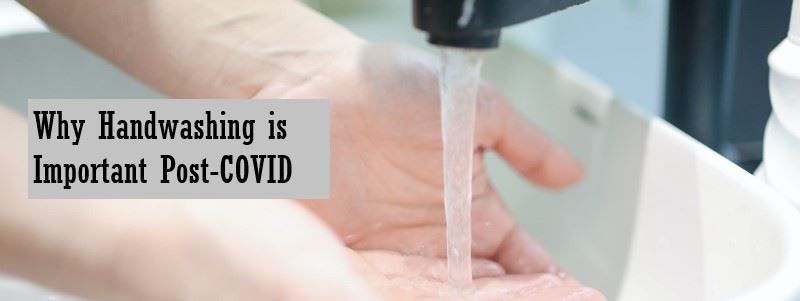Handwashing has always been important, but the idea that people should focus on it to stay well seems to have become more key during the pandemic. Sure, there’s been an increase in sanitising, but the concentration on washing hands after most interactions and trips outside the house is new. And in terms of the workplace post-COVID, we think this is a trend that should continue.
What is so Important About Clean Hands?
Clean hands have always been important. Washing your hands properly can kill bacteria and help you avoid picking up unwanted sickness bugs. This happening is more common in public places such as transport links, workplaces, or large venues. Saying this, places where different items are passed around/frequently touched are also hot beds for passing on bugs.
Ensuring you wash your hands frequently and avoid becoming ill is something that is linked to quality of life, but also your ability to work, go out or care for others. Washing your hands and keeping good personal hygiene is important for so many reasons!
How is Best to Wash Your Hands?
Believe it or not, there is a proper way to wash your hands. This has been communicated regularly over the space of the last 18 months, but if you are unaware, here is the best way to wash your hands:
- Wet your hands with clean running water and apply soap.
- Rub your hands together with soap for 20 seconds. This includes the back of your hands, between your fingers and rubbing the tip of your nails against your palm.
- Rinse you hands with water, rubbing them together so all the soap runs from your hands.
- Dry your hands thoroughly with a hand towel or air dryer.
This method is proven to kill almost all forms of bacteria and bugs, leading you to become less likely to transmit illness to yourself from the things you have touched.
How Can Employers Protect Workers Post-COVID?
Protecting workers from illness is both a moral and financial choice for employers. According to Able Recruitment, sick days cost the British economy £77 billion a year. And while that as a total figure won’t be costing the employer directly, a large chunk of that will be coming directly as sick pay and lost revenue to those businesses.
Some of the Stats Around Handwashing
- Reduces respiratory illnesses, like colds, in the general population by 16-21%
- Reduces absenteeism due to gastrointestinal illness in schoolchildren by 29-57%
- Up to 80% of communicable diseases are transferred by touch
- Failing to wash hands correctly contributes to nearly 50% of all foodborne illness outbreaks
How to Reduce Sickness Through Handwashing in Your Workplace
The best way to reduce sickness in your workplace is to ensure that everyone knows how important handwashing is and creates good habits. Giving people good washroom facilities and sanitizer stations is one of the best ways to reduce the chance of sickness in work. Providing people with hand wipes to clean down surfaces will also be a big help. Setting up a cleaning routine for the most touched areas is a good way to get everyone involved. This should be in addition to having a regular cleaner ensuring the place stays tidy.
Back
